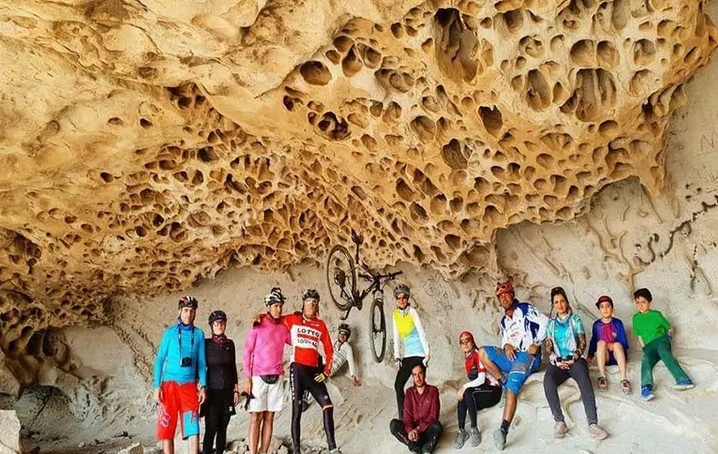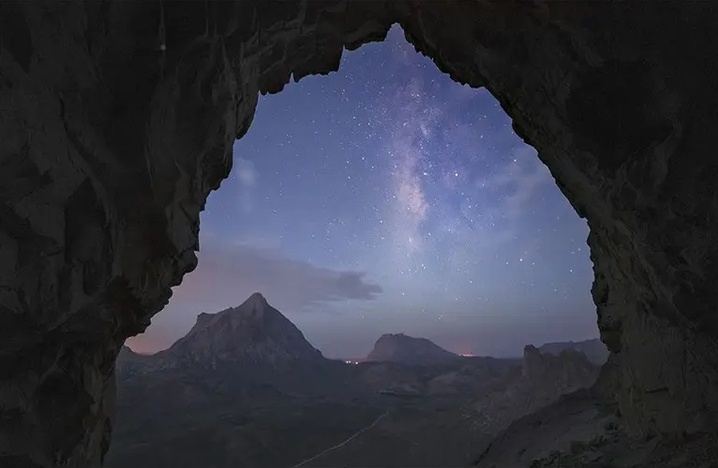SAEDNEWS: Kerman is the largest desert province of Iran, whose historical and natural attractions are considered part of Iran’s heritage. One of these is Eyub Cave in Kerman, located near the city of Babak, in the village of Dehnaj, and is famously known as the Great Yawn of History.
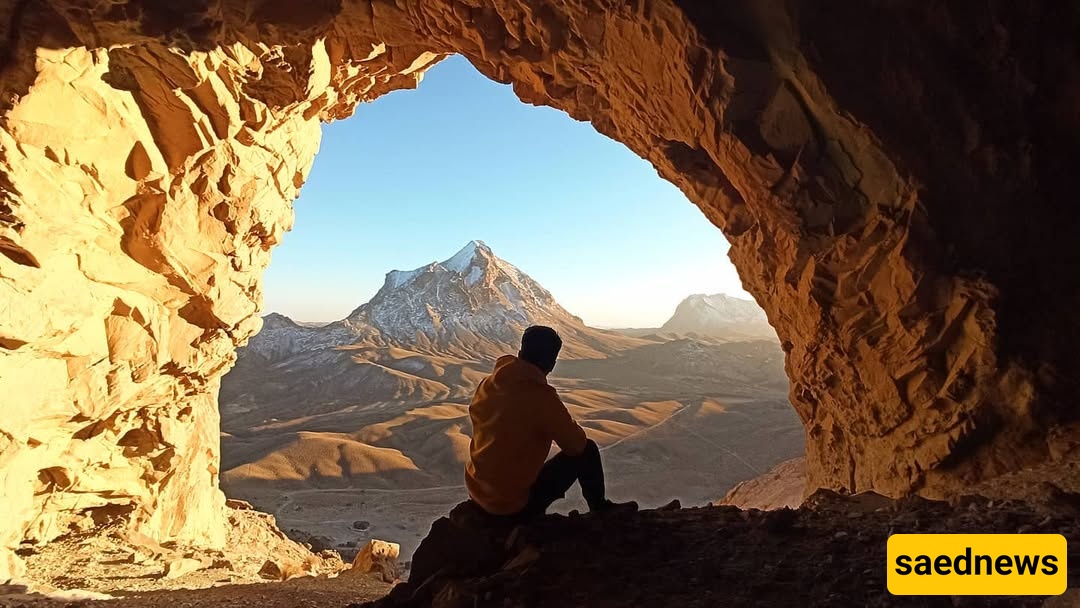
This cave is formed from volcanic lava, and its entrance is the largest lava cave opening in Iran. Its grandeur is astonishing, and the stories told about it are very interesting in their own way.
The historic Kerman cave, located in the city of Babak, is famous for its large entrance, which measures 60 meters in length and 80 meters in height. The cave’s rocks are of igneous origin, which makes this cave the largest igneous cave in Iran. In fact, this cave was created from volcanic lava in ancient times and has survived until today.
The Kerman cave is situated on a mountain of the same name, which reaches an altitude of 3,200 meters and is considered part of the central mountain range of Iran. Due to its geological and archaeological significance, it was registered as part of Iran’s national heritage on 9 Bahman 1384 (January 29, 2006) under registration number 13945.
Interestingly, Eyub Cave in Kerman is also known by another name, which is amusing and reflects the cave’s distinctive feature—its very large entrance. For this reason, it is also called “The Great Yawn of History.”

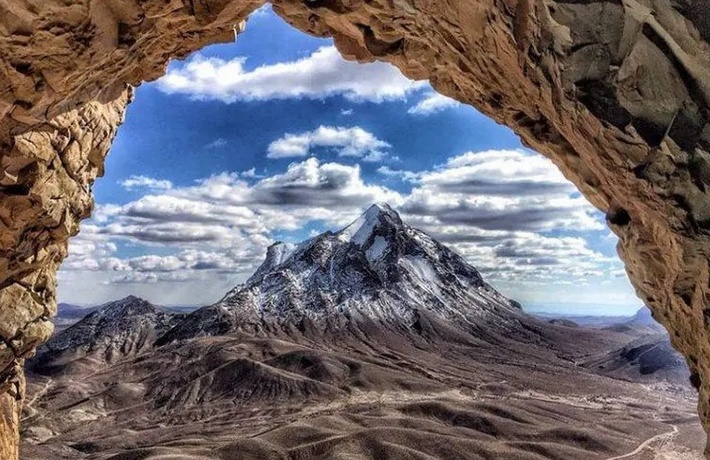
Since Eyub Cave is located in a desert geography and has a mountainous environment, the best time to visit it and other tourist attractions in Kerman is during spring, late summer, and early autumn.
During these times of the year, the desert climate is more moderate and does not become extremely cold or hot, allowing for a comfortable and peaceful trip. Keep in mind that at night, on Eyub Mountain and generally inside the cave, the air becomes very cold, so it is better to visit the cave during daylight.
Generally, caves around the world are formed due to various geological factors such as rock splitting, erosion, or rock slips. Since ancient times, from the era of early humans, caves have always been the first natural homes and shelters for humans.
In addition to being one of the tourist attractions of Kerman, this cave has a deep historical background. Eyub Cave was formed from volcanic lava, meaning that underground water beneath dacitic lava exploded upon joining together, shaping this cave within the mountain.
Over time, after the formation of the main body of the cave, humidity and cold air inside Eyub Cave caused severe expansion and contraction of its walls, leading to large pieces of rock detaching from it. This process contributed to the increase in the cave’s size over time.
Furthermore, besides all these expansions and contractions, wind also contributed to the erosive process of Kerman Cave. The impact of sand particles on the cave walls formed honeycomb-shaped walls inside the cave.
Archaeological evidence and various studies have shown that Eyub Cave in Kerman was once inhabited by humans, dating back to the Parthian period. This makes Eyub Cave one of Iran’s special archaeological sites.
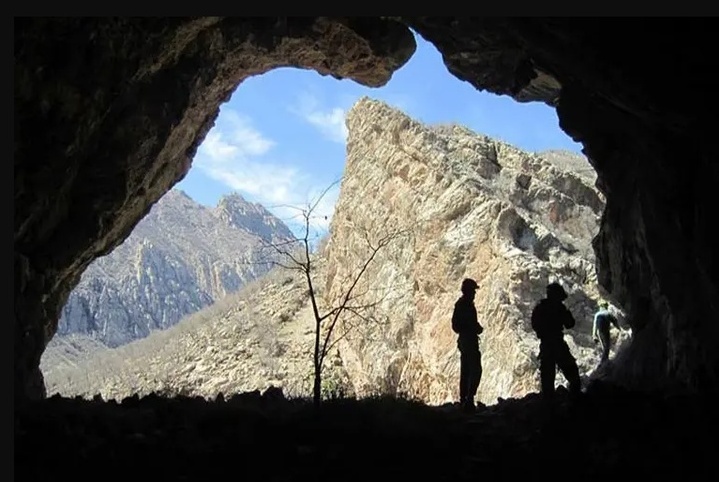
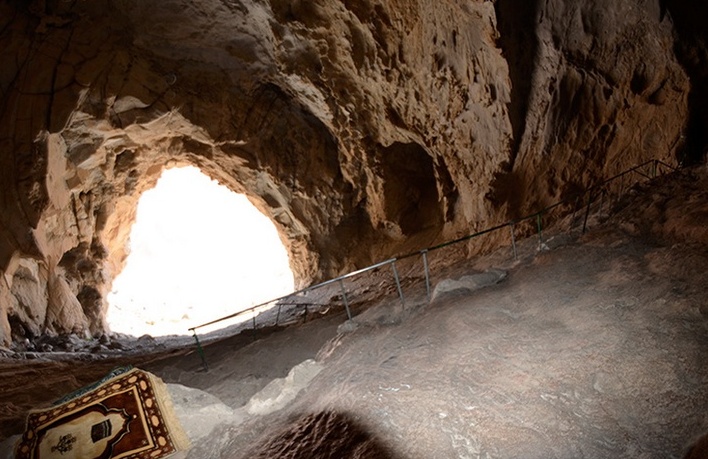
Do you know why this cave is called Eyub? It has an interesting story. Every year, during spring and summer, many people from the surrounding cities of Kerman, such as Rafsanjan, Sirjan, Yazd, Mehriz, and others, come to Kerman’s cave due to their belief in visiting it for pilgrimage, as well as for recreation and hiking. Now, why pilgrimage? They believe that Prophet Eyub (Job) lived in this cave for a period of time, and today, the trace of the Prophet remains as a footprint on the rock face inside the cave.
Since that time, the name Eyub has remained attached to this cave. Additionally, inside Eyub Cave in Kerman, there is a flowing spring of fresh water, which the villagers of Dehnaj have enclosed. They have directed the water outside the cave to a water reservoir through pipes because they believe that Prophet Eyub suffered from a skin disease, and when he found this water inside the cave and washed himself in it, his skin was healed. Due to such beliefs, the people of Dehnaj village in Babak, Kerman, named this cave Eyub.
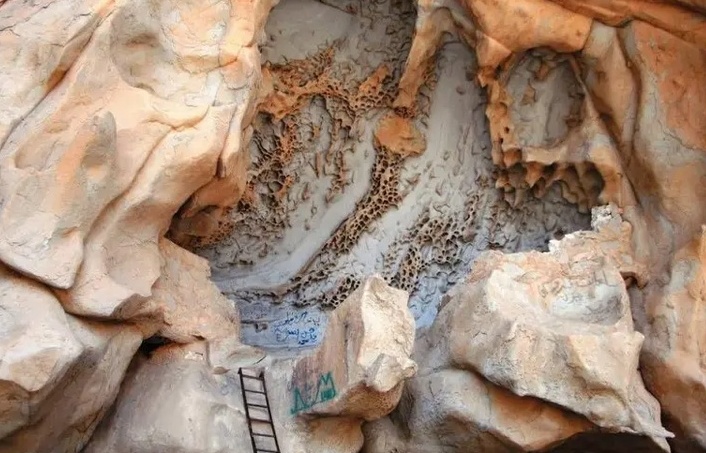
Apart from the igneous rock walls of Eyub Cave in Kerman, and the walls shaped like a honeycomb due to wind erosion, the interior of the cave also has different sections that can serve both as places of pilgrimage for visitors and areas for recreation and rest.
For example, in the eastern part of the cave, a small stream of water flows into a small pool at its base. The area around this pool is a resting place for those who have climbed the mountain to see Eyub Cave in Kerman. Even between the pool and the Halal and Haram hole, there is a place called "Manzelgah," which was suitable for the rest of the pilgrims.
Local people believe that Prophet Eyub once lived in this cave, and a little above this resting place, there is a hollow area shaped like a human foot, which is said to be the footprint of Prophet Eyub.
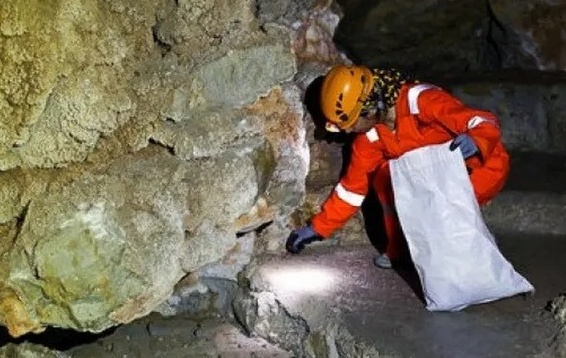
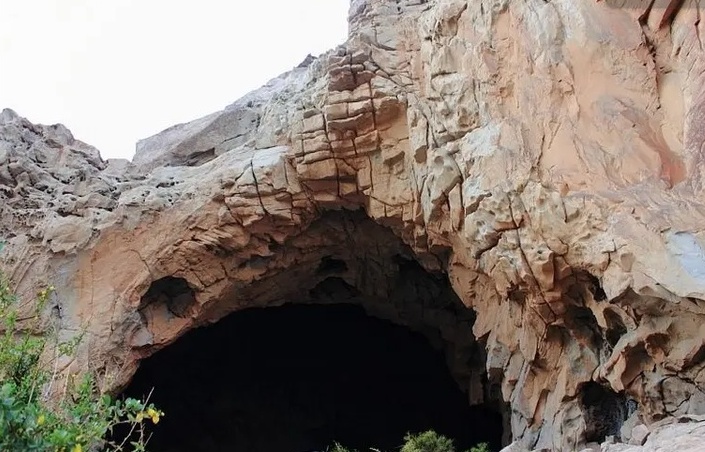
Since Ayoub Cave in Kerman is located at an elevation, reaching it requires some mountain climbing and rock climbing along the path. However, once you arrive at the cave entrance, you truly realize its grandeur and vastness!
At the cave entrance, as soon as you step into the cool air of the cave, on your right you will see a green ladder leading to a small room with a large window overlooking nature. The view from inside the room is breathtaking and indescribable. The mountains facing the entrance of Ayoub Cave in Kerman have fascinating patterns and colors, which makes the scenery appear pristine and mountainous.
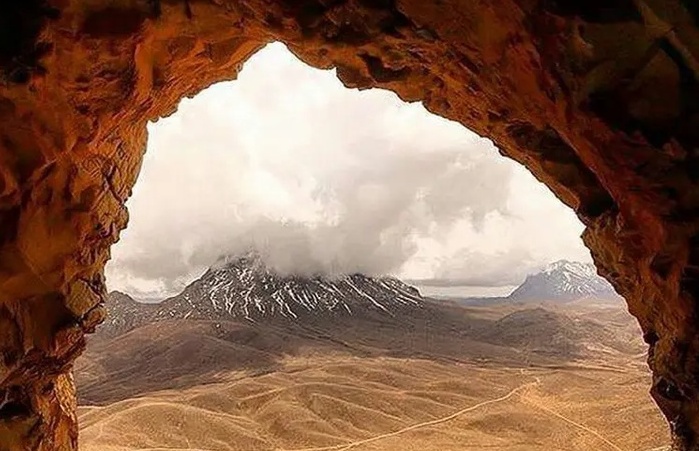
Around this small room, you can also see remnants of some man-made walls, indicating that this cave was used extensively in the past. The depth of the cave reaches up to 200 meters, and to reach the end, one must climb a steep path, though metal railings have been installed from halfway to make movement easier for visitors.
The end of the cave has a strange and mysterious atmosphere. Even though it is slightly cluttered and busy, seeing the scattered books and the decorations inside the cave makes you think of the untold stories of Ayoub Cave in Kerman—who came here for wishes, spent hours or even days, and left traces behind.
Moreover, the patterns on the cave walls are also quite attractive. The holes formed by water and wind erosion have created interesting visuals on the walls.
Many stories have been told about Ayoub Cave in Kerman, and each part of it has been associated with a legend, each fascinating and worth hearing. Even today, some people visit this cave because they believe in these legends.
There is an area in the central chamber of Ayoub Cave in Kerman called the “Manzelgah” (resting place), where visitors usually sit to rest. About 150 meters above this Manzelgah is the Moonlight Child Spot. In this location, there is a hollow with a footprint resembling a human foot, which locals attribute to Prophet Ayoub.
Interestingly, there is also a legend that says on Friday nights, a group of children known as the Moonlight Children (something like spirits!) recite the Quran there, and some people claim they have even heard their voices!
On the eastern wall of Ayoub Cave in Kerman, a thin stream of water flows from the ceiling, eventually falling into a small pool at the base of the wall. The water in this pool is very fresh and cool. Above this pool, there is a flat area where a small hollow resembling a mortar can be seen. This hollow is actually known as the Pool of Wishes or “Joqan.”
Locals believe that if you have a wish, you should make your intention by this hollow and then throw a small stone into it. If the stone bounces out of the hollow after hitting it, your wish will come true!
This part of the cave legends is very interesting and amusing! If you go to Ayoub Cave and look toward its western wall, you can see a large, circular hole with a small diameter in the rock. This hole is known as the Halal and Haram Hole. Locals believe that if a person is born righteous (halal-born), they can pass through this hole, but otherwise, they cannot!
Since the cave is both a tourist and even a pilgrimage site, stairs and railings have been built to make movement inside easier, but this does not take away from the reality of it being a cave or the mountainous nature of the area!
Eyoub Cave is at a considerable height above the ground, and naturally, you need to do some mountain climbing to reach it. Therefore, proper clothing, suitable shoes, and a light backpack are essential items to bring with you. Also, bring water with you because the spring water of Eyoub Cave may not necessarily be available for drinking.
Since the path to the cave requires a short climb, elderly and weak individuals are advised not to visit Eyoub Cave as it may be risky.
Do not forget essential equipment and proper mountaineering attire. Remember, the lighter you are, the more comfortable your journey will be.
The most important tip for photographing caves is to never use a flash, as it may provoke the bats to fly toward you.
And the final point: please do not litter or write graffiti on the cave walls so that the pure and beautiful nature of the cave is preserved for future generations.
Eyoub Cave is one of those tourist attractions in Kerman and Iran where, in addition to natural and ecotourism attractions, you can also become familiar with its archaeological and historical features. It seems that this cave has always been with the people of Iran since ancient times and has had a story to tell, so much so that even today, its legends are narrated among local people, and many travel to this cave for wishes and pilgrimage.
What secrets do these stone walls, left to us by volcanic eruptions, hold for us? Will future years bring new legends about Eyoub Cave that are completely different from what we know today?
